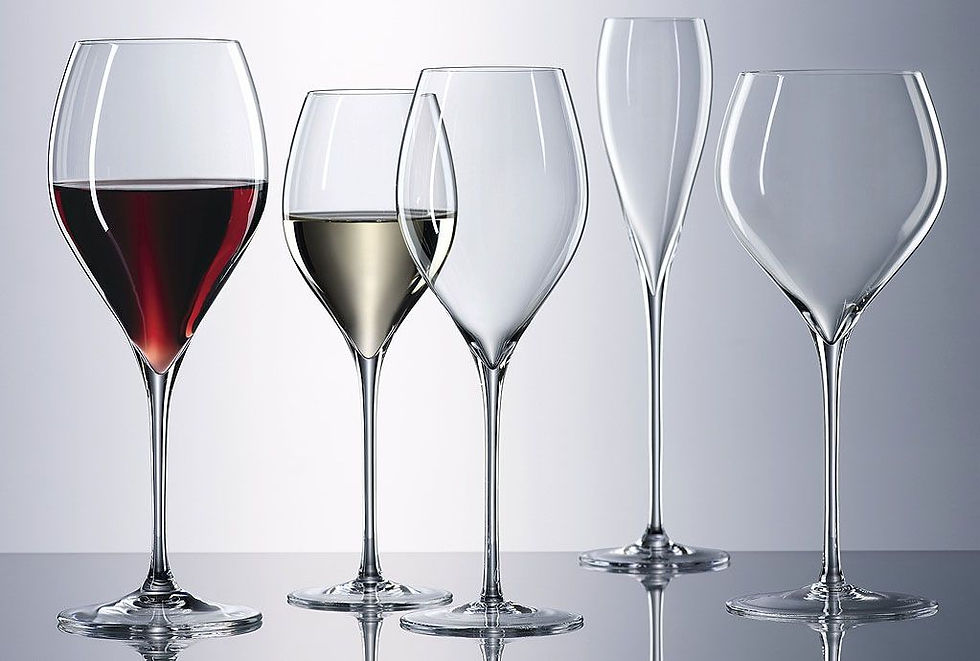LATEST SAMPLES FROM BRAUNEWELL
- Terry Theise

- Apr 30
- 4 min read
And I hasten to add, from one of the very best of the young lions of Rheinhessen, an ambitious and serious grower who hasn’t lost sight of the power of deliciousness, even while many of his wines are as intricate and devoutly serious as they come. At times, for me, excessively so.
Back in my prospecting days, when new growers sent me samples I’d ask them to include a few back vintages of varying types; high-acid, low-acid, bigly ripe and small ripe. It’s impossible to assess a new winery from the latest vintage alone. Had I been screening Braunewell, I’d have made an inaccurate judgment based only on the 2023 Rieslings. This implies a degree of necessary triaging that may be too much work for an importer, but with most growers the target doesn’t stand still. You have to select strictly, and sometimes they don’t like it.
To elaborate, I’ve known these wines for around seven vintages and am only now forming any hypotheses about what sort of winery this actually is. It’s fair to suggest that the Rieslings do best in warm years when the prevailing danger may be too little structure, precisely when these Rieslings shine. The reverse is truer for the Spätburgunders, which seem to do best in cooler years and which can spill over their banks in “big” vintages such as 2020. The Liter Scheurebe is always sensational while the Kabinett requires a vintage that’s expressive for Scheu.
I’d summarize; the Rieslings tend to be whippy, which serves them well in higher pH years and less well in years when Riesling is mostly whippy. I might say “generally good Rieslings with sporadic peaks which justify the effort to search out.” The situation is similar with the Spätburgunders; nearly always smart and good but wow, once in a while you find a remarkable gem (e.g. the ’21 Teufelspfad) that can carry you away. He seems to have a steady hand with sparkling wines, which show a reassuring consistency with regular high points.
He didn’t send SEKT but I tasted them at the estate last October and was deeply impressed and deeply relieved to learn the American importer was offering them. This time I have three Pinot Noirs, two Scheurebes, and seven Rieslings – essentially “my crowd” though the estate offers the Pinots (Blanc and Gris) and a little Sauvignon Blanc.
THEISE USES SCORES AND DOESN’T FEEL HYPOCRITICAL:
For the past 2-3 years now I have remarked repeatedly upon the essential difference between “tasting” and drinking. In nearly every case it is more pleasurable to drink than to taste any given wine. I have come to assume it.
Tasting is an exercise in perceiving and isolating details so as to render a judgment based on having apprehended all the elements in play. Some elements are less pleasant than others, and some are acutely unpleasant. I sometimes wonder in what universe these things pertain, except that they work a taster’s analytical muscle and keep it functional and competent. But that seems to me a private matter between taster and wine, a kind of onanism, and I doubt whether professional buyers – importers, retailers, sommeliers – really base their decisions on such minutiae. If I am correct, they choose what to buy based on what it’s like to drink the wine rather than how it is to “taste” it. If I am wrong, then something needs to change, because the tasting environment is an airless place, all that obsessing over every conceivable (and some inconceivable) detail, whereas the drinking environment is based on sensuousness and pleasure.
I’m oversimplifying. Yet having been a taster for four and a half decades, it’s hard to avoid this conclusion. We make a kind of searchlight of our palates, and when we taste professionally we are alert for reasons to identify flaws, but when we drink we look for reasons to be glad.
But regardless of whether I’m correct in theory, I’m on solid ground in practice. Tasting wines in general and these wines in particular, and then sipping them before and with meals, I am aware of the” faults” I noticed as a taster. I do notforget them when I raise the glass a few hours later to sip the wine, but very often they seem to have either shrunk or outright disappeared. Other times I notice them but they don’t seem to matter. I’m growing weary of saying this again and again, and so I propose a scale. Yes, a scale! Points!
It is a 3-point scale. Three means there is a huge gulf between the tasting and drinking of a wine. Two means there is a significant gulf, but the “issues” gleaned in tasting are not entirely effaced. One means that a “flaw” that troubled me tasting is still present but untroubling when sipping.
For this group of wines as a group we have a score of two. When individual wines vary, I’ll tell you. If you read a note that doesn’t cite a liability, there wasn’t one, so the scale doesn’t apply.
Finally, I have never found a wine inadequate when sipping only to find it outstanding when tasting. I don’t think it is possible.
The wines were packed and shipped late in 2024, and I assume the vintages were current at that time. Regardless, every sip tells a story, and thus we begin…..






Comments